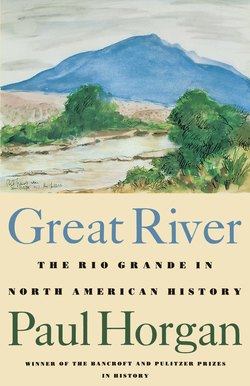Читать книгу Great River - Paul Horgan - Страница 35
На сайте Литреса книга снята с продажи.
Оглавление14.
The River of May
In the autumn of 1568 the Rio de las Palmas was crossed somewhere in its lower reaches near the sea by three destitute men who were walking to the northeast. They were David Ingram, Richard Browne and Richard Twide, English sailors who had come to the New World with the fleet of Captain Sir John Hawkins. At Veracruz where six English ships had put in for refuge from storm and a haven for overhaul, they had done battle with Spanish vessels in the roadstead. Only two English ships escaped. One, captained by a certain Francis Drake who would richly fulfill a later opportunity for revenge, sailed directly for England. The other, under Hawkins, overloaded with survivors, bore north along the Gulf Coast and at their own request landed one hundred and fourteen men on the beach thirty miles above Tampico, and then stood out to the long voyage across the Atlantic.
The shore party were attacked by Indians, and presently divided, one group going north, another south. The northern marchers lost more men through attack, and others through faintness of heart that made some turn back to overtake those moving southward, and still others who abandoned themselves to the countryside. The three who came to the river referred to it as the River of May, where “the ground and countrey is most excellent, fertile and pleasant,” more so than country they had already crossed, “for the grasse of the rest is not so greene, as it is in these parts, for the other is burnt away with the heate of the Sunne. And as all the Countrey is good and most delicate, having great plaines, as large and as fayre in many places as may be seene, being as plaine as a board.…”
They examined trees and bushes, identifying many, and tasting the bark of one which bit like pepper, and seeing “a great plentie of other sweete trees” to them unknown. Of all, the fruitful palm tree yielded most interest, for it carried “hayres on the leaves thereof, which reach to the ground, Whereof the Indians doe make ropes and cords for their Cotton beds, and doe use the same to many other purposes.” Further, “The which Tree, if you picke with your knife, about two foote from the roote, it will yeelde a wine in color like whey, but in taste strong and somewhat like Bastard, which is most excellent drinke. But it will distemper both your head and body, if you drinke too much thereof.…” The palm tree gave not only drink but meat, since “the branches of the top of the tree, are most excellent meat raw, after you have pared away the bark.” Finally, the useful and beautiful tree could save life, for “Also there is a red oyle that commeth out of the roote of this tree, which is most excellent against poisoned arrowes and weapons: for by it they doe recover themselves of their poysoned wounds.”
As for “Tempests and other strange monstrous things in those partes,” the sailor saw it “lighten and Thunder in sommer season by the space of foure & twentie houres together,” and concluded that the cause for this was the heat of the climate. They saw “Furicanos,” and “Turnados,” with “a Cloud sometime of the yeere seene in the ayre, which commonly turneth to great Tempests,” and again, “great windes in maner of Whirlewindes.”
They crossed the great River of May whose gulf land they saw so clearly, and went on their way until a year after the beginning of their misadventure they arrived at New Brunswick, having walked the whole shape of the American coast from Mexico east and north. In 1569 they were safe again in England.
